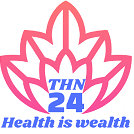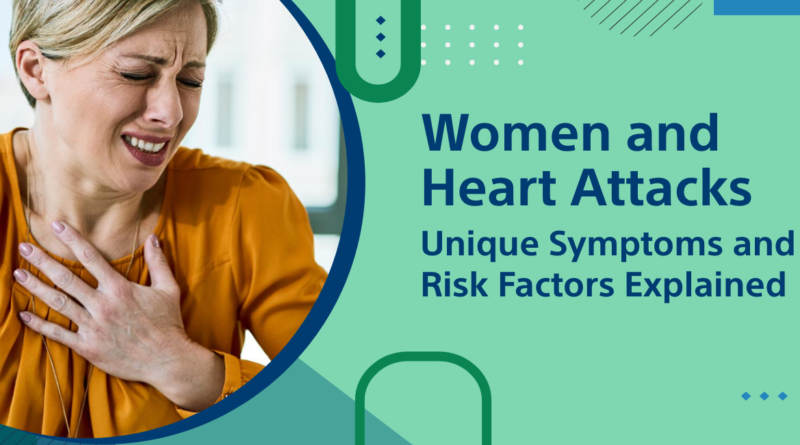Women and Heart Attacks: Unique Symptoms and Risk Factors Explained
Cardiovascular disease is the leading cause of death among women in India, and contrary to popular culture beliefs, women suffer heart attacks like men too. However, the signs of heart attack and risk factors for the fair sex also vary from those from men. Knowledge of such differences will go a long way in the early diagnosis and elimination of the problem. This article will focus on understanding; the signs of a heart attack in women, risk factors, and ways to overcome these risk factors of heart attack.
Overview of Heart Disease in Women
The illness, including heart attack, is often regarded as a disease for male population only. Perhaps, this is a reality because in the past men were more affected by heart disease than women are today. According to the CDC, heart disease is responsible for more deaths in women in the United States than many other diseases.
It’s a harsh truth that one-third of all women die from heart disease, and this figure is higher than the total stats for all the types of cancer.
This is because some symptoms of a heart attack vary when it happens in women, compared to men, and therefore, many women are diagnosed later. Perhaps many women are simply unaware of the signs they could be experiencing a heart attack until it is too late. This shows there is need to ensure one is knowledgeable on the particular signs that may lead to a heart attack.
Unique Symptoms of Heart Attacks in Women
When it comes to heart attacks, symptoms related to heart attack in women are not as obvious as one might think. Some of the conventional signs like chest pain which are characteristic of a male candidate may even be lacking in women. However, women can suffer with quite nonspecific symptoms, which may not point clearly towards myocardial infarction.
Chest Pain or Discomfort: This may sound familiar as a symptom of a heart attack but it may vary with women. Instead of making it painful, it might feel like pressure, that tightness or even some uncomfortable fullness.
Pain in Other Areas of the Body: Specific parts that women report are areas of pain may include the jaw, neck, shoulder, or upper back. This type of pain may not be as severe as the chest discomfort most people associate with heart attacks, but it’s a sign, nonetheless.
Nausea or Vomiting: In contrast to the men majority of women have nausea or vomiting before or during the heart attack. This is because this condition is normally mistaken for some other less serious illness like for instance indigestion.
Fatigue: Another one of the symptoms which is typical of women is fatigue for no apparent reason and all of a sudden. For several days before a heart attack women may experience fatigue and weakness that is often mistaken for stress or flu.
Shortness of Breath: Some people may have trouble breathing or start feeling winded during simple physical tasks, which should also be alarming. Though it can be confused with a respiratory condition, shortness of breath could be a sign that something is not right with the heart.
Lightheadedness or Dizziness: Women can have dizziness and light-headedness. It can be brought about by decreased blood circulation in the event of a heart attack.
These symptoms of heart attack in women are in many cases quite different from the chest pain and pressure that men typically feel. Women are also more likely to have subtle, chronic symptoms rather than the acute, dramatic onset of pain like that seen in many male heart attack victims.
These symptoms are not very well known and are generally not as severe compared to the typical male symptoms; thus, women will not consult a doctor as early as men and this increases their chances of getting complications. It is important that women know these symptoms to ensure that if they occur they make sure they are treated early.
Risk Factors Specific to Women
1. Hormonal Influences: Another major risk factor specifically for women is hormonal change where changes in women and going through menopause increases their chance of developing heart diseases. The number of estrogen receptors decreases during menopause, and this raises the likelihood of cardiovascular disorders. Estrogen is believed to possess some cardio-protective activities and therefore, after occurrence of menopause which marks the end of womanhood, due to lack of estrogen, women are at a higher risk of developing heart diseases or acting dread – heart attacks.
2. Pregnancy-Related Conditions: Some pregnancy complications can predispose a woman to heart disease in the future. There are pregnancy complications such as preeclampsia (high blood pressure, often occurring in pregnancy) and gestational diabetes that increase one’s risk of getting a heart attack. All women that go through these conditions during pregnancy should be very cautious of their heart all the subsequent years.
3. Autoimmune Disorders: Lupus or rheumatoid arthritis are diseases that tend to affect women far much more than men. These conditions are associated with high risk factors of developing heart diseases. The possibility of developing inflammation of blood vessels is also higher in women with autoimmune diseases, which make them more vulnerable to heart attack as well as to a stroke.
4. Mental Health and Stress: Therefore, chronic stress, anxiety, and depression were associated with greater risk of developing heart diseases in women. Research indicates that girls get prone to stress induced heart problems, and stress leads to risks such as high blood pressure, obesity, and many other heart disease risks. In addition, the stress may also differ in women in that women have to perform additional caregiving responsibilities that could also cause stress.
5. Obesity and Metabolic Syndrome: Overweight and obesity are strongly associated with heart disease, and women are considered to be at a greater risk of obesity-associated heart diseases. Also, metabolic syndrome, or a cluster of conditions characterised by high blood pressure, high blood sugar, increased body fat around the waist, is also more prevalent in women and also increases the chances of heart attacks.
Shared Risk Factors with Men
Despite these several significant risk factors, women also have several risk factors similar to men. These include:
1. High Blood Pressure: Hypertension (high blood pressure) is one of the leading causes of heart diseases whether in men or women whether young or old. Hypertension can harm the arteries and cause a heart attack and stroke.
2. High Cholesterol: Cholesterol elevates the fat deposits inside the blood vessels leading to a disease called atherosclerosis that may result in a heart attack.
3. Smoking: Tobacco is one of the single biggest causes of heart disease and puts men and women at equal risk of having a heart attack. Smoking raises the risk of heart attack in women more than in men.
4. Sedentary Lifestyle: Sedentary lifestyles have been also shown to be correlated with heart disease in both male and female populations. Physical activity can also help prevent the development of heart disease, enhances the circulation of blood in the body, lowers the hypertension level and dangerous cholesterol.
Why Do Diagnosis and Treatment Often Differ?
Despite the increasing rate of heart disease in women, they receive a late diagnosis and inadequate treatment. This may be due to the fact that heart disease is thought of as a ‘mans’ disease and doctors may not consider heart disease in women. Moreover, the symptoms that are demonstrated by the ladies are a bit different and this gives way to mistreatment or even wrong diagnosis.
Men have been the main subjects in cardiac arrest studies for years, which was a problem because all treatments were generic. Women are also inclined to report the manifestations in a different way than men do this is why it becomes possible to underestimate their risk by doctors. It is a fact that such a difference in diagnosis and treatment may create a basis for worse results concerning women.
Prevention and Lifestyle Modifications
Fortunately, the majority of the factors that increase the probabilities of heart attack are within women’s control and women can keep their hearts healthy. A heart-healthy lifestyle includes:
• Healthy Diet: A diet that is low in saturated and trans fats while being high in fiber, fruits, vegetables and lean protein source will prevent heart diseases. The other goal is also reducing sodium and unhealthy fats to help maintain low blood pressure and cholesterol.
• Exercise: The recommended activeness is among the most beneficial measures to prevent heart diseases. Female clients need to try to do at least 30 minutes of moderate exercise on the majority of days in a week.
Read also: Innovations in Heart Stent Technology: What’s New?
• Smoking Cessation: Smoking cessation is said to be one of the most important measures a woman may take to decrease her risk of a heart attack.
• Stress Management: Stress reduction techniques like meditation, yoga, counseling and the like, before, during and after the episodes have been of immense benefits to heart health.
• Regular Check-Ups: Screening tests for those risks should be conducted periodically thus, women should visit the doctor regularly to test her blood pressure, cholesterol levels, and diabetes.
Key Takeaways
Knowing the differences in manifestation of quick heart attack in women and the factor that plays a vital role in ladies health should be known to save lives. It is important for women specifically to understand their bodies and heart, warning signs, risk factors, and when to go to the doctor. Screening, maintenance of a healthy diet, engaging in exercise and proper care of the mind will greatly help to prevent heart attack.
If, for any reason, you are experiencing chest pain consistent with what we’ve outlined as a heart attack, do not wait. If you experience any of the mentioned symptoms, you should call your doctor straight away and act to improve your heart health.



